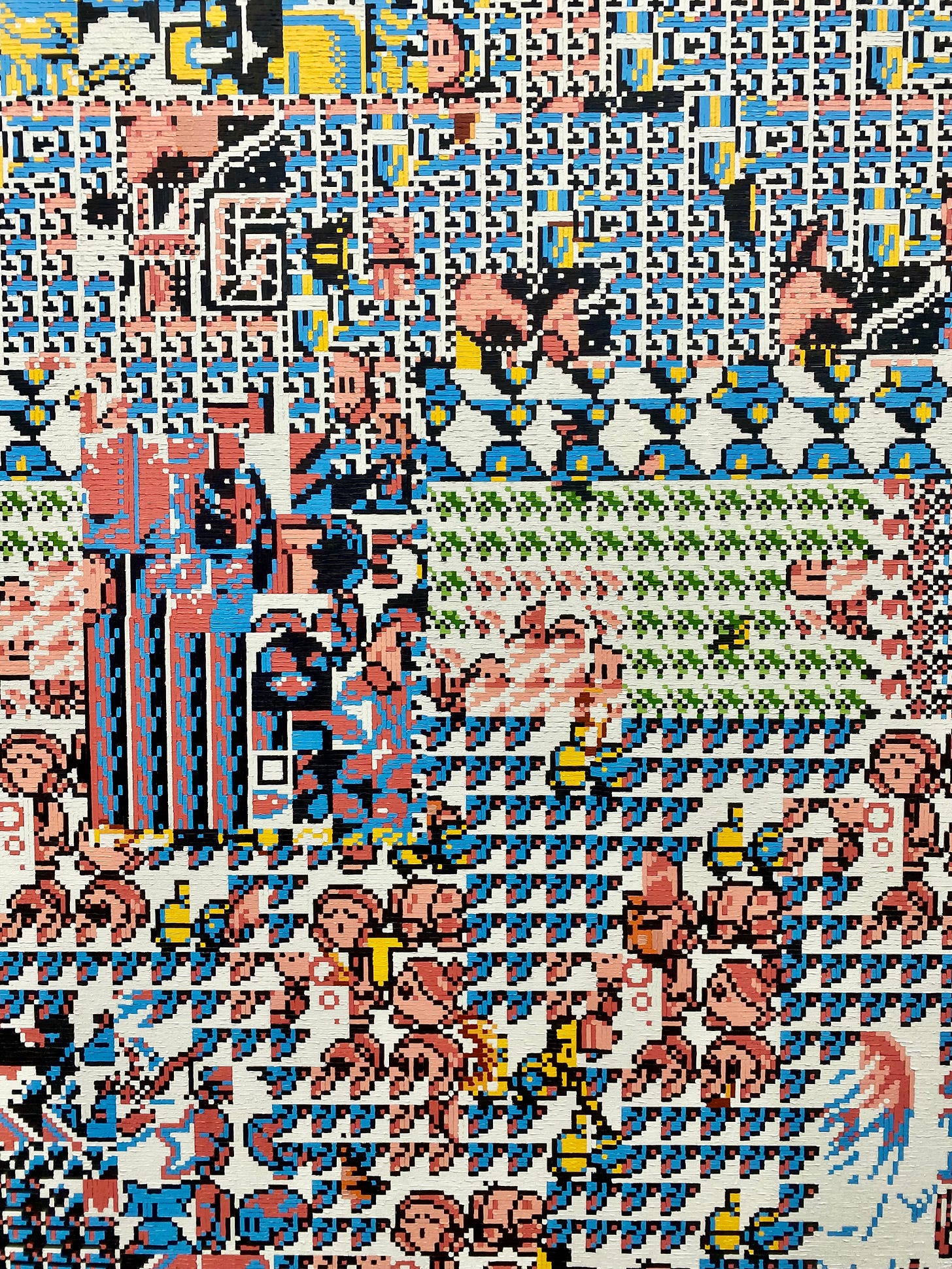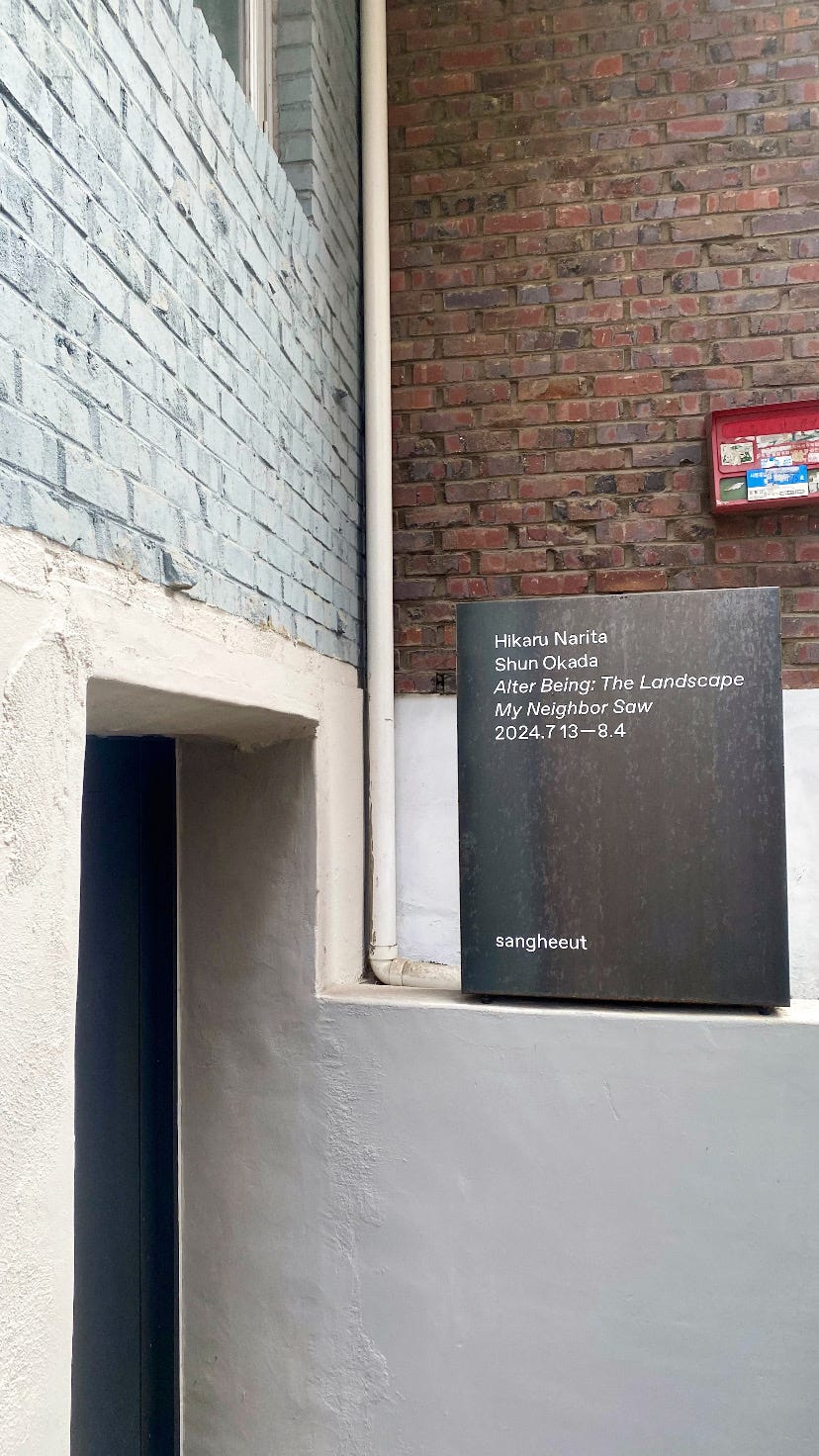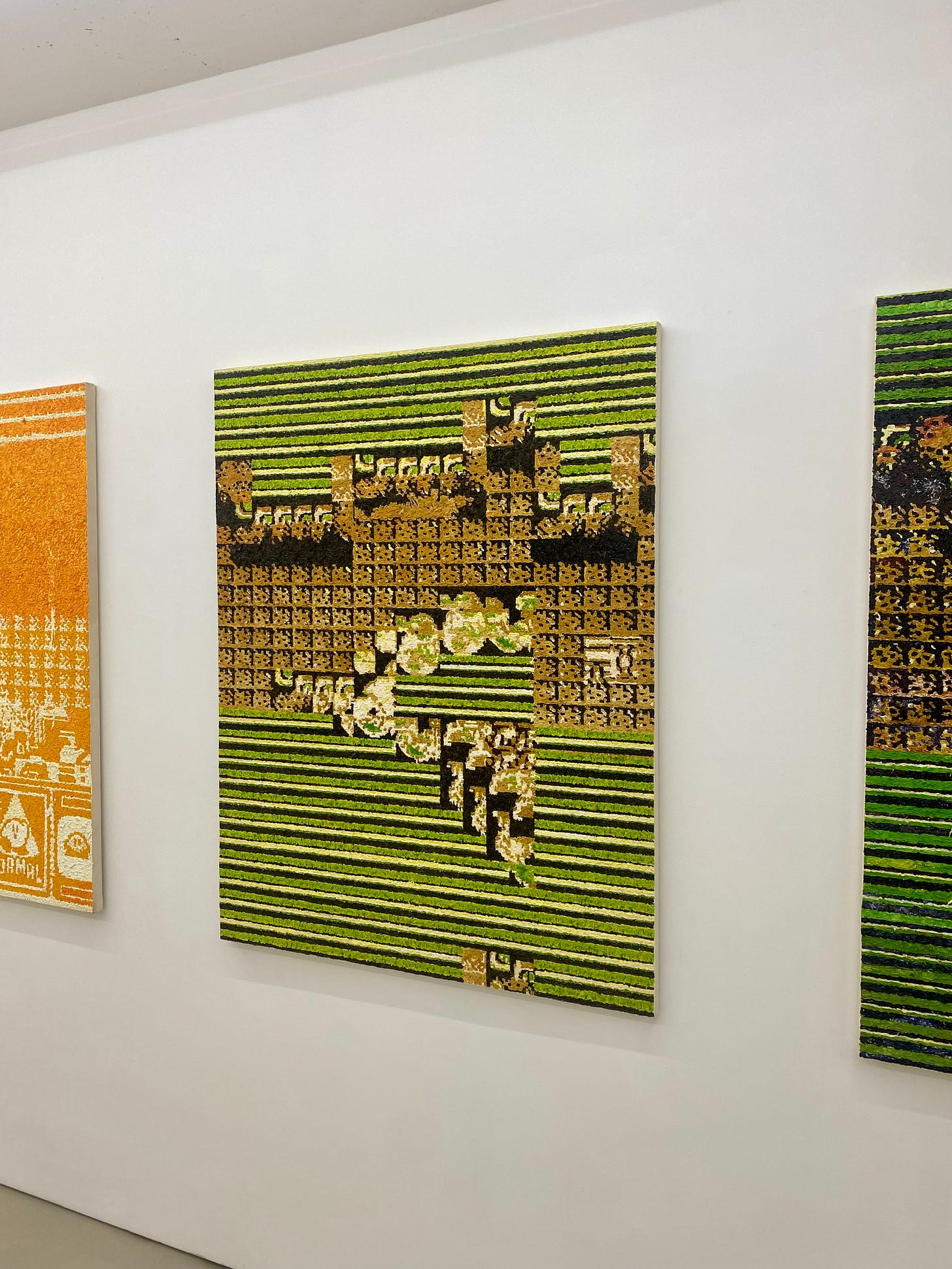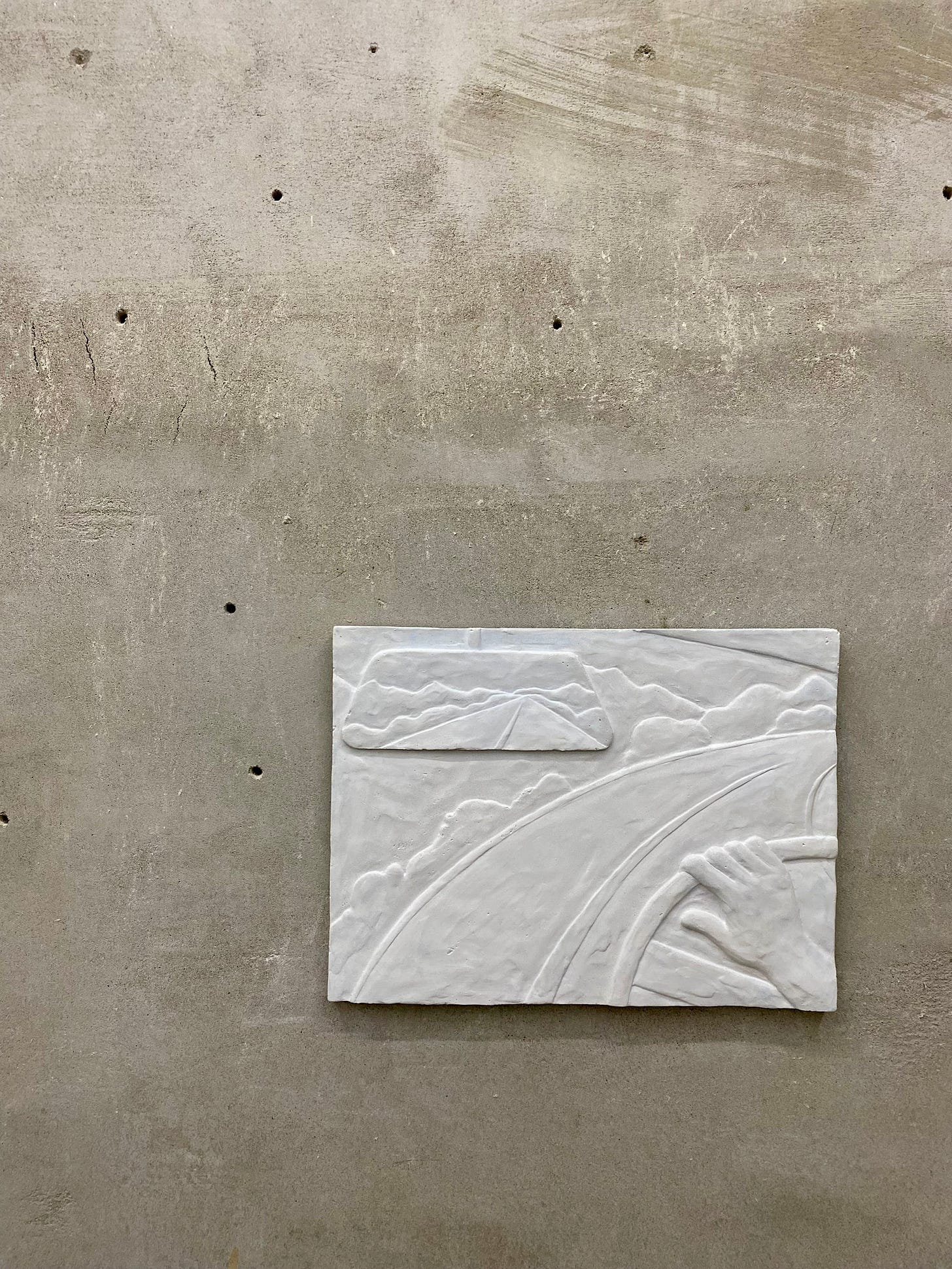If you’re into K-dramas, you’ve probably heard of the hit COVID-era drama, “Itaewon Class.” If you’ve googled Seoul, you’re likely to have seen Itaewon on a map somewhere. If you live here, you know that it’s one of the most concentrated foreigner-friendly communities in Korea. And if you’re me, you still can’t believe that you get to call it home.
Sprawling over the southern face of Namsan (남산), it famously boasts steep hills that rival San Francisco. You’ll see halmeonis and harabeojis zoom past you up dramatic inclines as you reevaluate your existence and whether the cafe at the top of the hill is really worth it. In my opinion, it's the last defense Seoul has against totally wiping out its unique mom-and-pop neighborhoods. It clings to neighborly affection, flower pots on windowsills, quiet alleys and softly-lit rooftops; it juxtaposes the beauty of the mundane with the extravagance of tomorrow.
But…have you heard of HBC?
HBC stands for Haebangchon (해방천), an area just west of Itaewon. Technically you could lump the two together into one big, multicultural monolith, but HBC always seems to have a life of its own in comparison to its larger, more famous cousin down the street.
HBC runs along one of the borders of the US military’s former Yongsan Garrison, now mostly out of use as it’s gradually turned back over to the Korean government for repurposing. You can wait for the bus in front of the base’s outer wall, still boasting rusted barbed wire and signs that say, ‘US Government Property.’ Itaewon and HBC are littered with buildings designed for government staff living off-base, mostly apartments with American amenities and Korean bones. Take our apartment, for example, which has dual voltage: US & Korean.
HBC is also, thankfully, full of delicious cafes and restaurants catering to international palates, all tucked into repurposed houses and quirky red brick storefronts. You can find some of the best tacos in Korea at Taco Stand, imported snacks and groceries at Charlie’s Grocery, eat New York-style pizza while catching a game at Bonny’s, or dig into delectable tagine at Morococo Cafe. Maybe you’ll head farther up Namsan to get lost in the market-turned-cafe & restaurant hotspot known as Siheung Market, or to Nuldam Café to sip coffee while writing a letter to future you.
Whatever you choose, like me you may also find that it’s brimming with equally small galleries.
sangheeut gallery has been on my list of HBC galleries to visit for a while now. Founded in 2021, it’s a relatively new experimental exhibition space with an aim to act as an ‘incubating gallery.’ It focuses on emerging and mid-career artists, providing space for them to explore new, boundary-pushing concepts. sangheeut gallery’s aims follow a trend in the area of smaller, experimental spaces that deviate from the traditional modes of exhibiting new works. For example, POST is another experimental space farther up the hill that focuses on short-term residences for artists and researchers. The area hosts studios for both established and emerging artists, which adds to the atmosphere that sangheeut tries to cultivate. Thankfully, on this trip, I was joined by a friend who happens to curate for POST, as we’re both always looking to get to know other spaces in the area.
If you’re not looking for it, however, you might miss sangheeut altogether. The space is situated in a small, half-basement in the same building as a trendy bar called Seoul Vinyl. Save the small sign above the door, you might walk right by. But once you’re inside, the charm of the space makes itself known and is certainly worth a bit of extra searching.
The exhibition on view was a concurrently running collaboration with CALM & PUNK GALLERY, based in Tokyo. sangheeut’s iteration, entitled ‘Alter Being: The Landscape My Neighbor Saw,’ played host to Japanese artists Shun Okada and Hikaru Narita, while CALM & PUNK would host, ‘Alter Being: Only the Hat Knows,’ featuring South Korean artists TZUSOO and Seounghee Lee. You can think of it as an exchange, bringing narratives across borders.
Walking into the space you are met with images that bring a sort of nostalgia to the surface, reminding you of trading Pokémon cards at recess and chewing neon pink bubblegum after school. The color palates of Okada’s paintings are vibrant and contrasting, with oil paint layered in geometric patterns one could spend hours trying to dissect. You happen upon familiar reinterpretations of the lovable Kirby tucked into cubes and corners of a verifiable visual maze; stepping back, you see the whole as a broken screen, as if someone smashed it by accident.

I found myself stepping back and forth, physically zooming in and out while trying to see how these pieces may fit together, if at all. It’s been years since I’ve picked up a paint brush and yet I’ll never not be impressed by the different techniques employed by painters the world over. Looking at the time and attention to detail it likely took to get these images just right, to get the thick lines so perfectly crisp yet textured; my mind felt exhausted already. Around each corner there seemed to be a more complex design waiting, all of them tucking away memories of when technology may have been less all-consuming, and a bit more fun.
The exhibition text itself discusses the usage of ‘kitsch’ images as motifs in contemporary art today. The artists themselves conduct their own interventions that leave traces of themselves within these depictions. With how technology has developed, do we really need to make 2D images by hand? Do we really need to leave a very human mark on something we’ll only ever digitally consume?
If you’re a fan of Hayao Miyazaki, he’s probably coming to mind right now. He may be one of the strongest remaining proponents of the need for hand-drawn animation, adamantly pointing out what we have to lose if we turn over our creativity completely to technology. He came to mind for me as well when I started to look more closely at Narita’s sculptures. At least, I think one could consider them sculptures? Some were mounted, and some leaned against the wall. Some of them seem to similarly depict snapshots of melancholy memories: a drive down a long road, a teddy bear sitting atop a child’s bookshelf. For me, though, Miyazaki comes to mind because of one sculpture in particular.
It depicts a simple fire, but for me it screams Calcifer from Howl’s Moving Castle, my favorite Miyazaki film. Is it him? No. Did the artist have him in mind? Also, probably, no. Maybe I was still riding a nostalgic high from Kirby across the room—all while being tangled up in trying to figure out when the last time I sat down to draw was—but in thinking about the magic of 2D, to me, this could only be Calcifer.
The sculptures themselves appear plaster-like, gaining their definition from shadows created by the overhead lighting. But what stood out to me was the choice to leave space between each piece and the surface of the wall, filling said space with a subtle, airbrushed layer of color. Depending on the shade, you might miss this just as easily as missing the gallery altogether. I’m not sure if this was purely a curatorial choice or the artist’s installation-specific instructions, but regardless it’s something I’ll admit I’d never seen before. It almost makes the white-on-white objects glow; the red behind the fire alludes to warmth, and the yellow behind a nature scene creates its own sunlight. The blue shade behind the bookshelf even made me think of shadows created by nightlights, often color-tinged and subtle.
Bringing these artists together turned out to be a powerful yet understated pairing. I’ll be the first to admit that I tend to jump to conclusions when I see ‘kitschy’ figures used in artworks, none of those conclusions often holding much bearing other than, “It’s just not my thing.” The deeper meanings behind using them are lost on me more often than not, which remains pretty naïve in hindsight. Through studying contemporary art for so many years, the most valuable lessons I’ve learned have mostly centered around not stopping at surface-level observations; looking back 2, 3, even 4 times, because there is always another story to be told, another way to look at things. There is no wrong interpretation of an exhibition, but there are interpretations that lack curiosity.
But in thinking back on this exhibit as my friend and I decompressed over peaches and nectarines at hmm.market, I realized that no matter what I think I know, I don’t know it all. I can see 100 abstract paintings without connecting to any, but have an epiphany with the 101st; I can walk into yet another sound installation expecting gritty confusion only to find softness and emotion that feels like it's holding my hand. When people ask me if I like everything that I see I can confidently answer no, no way quickly followed by but I give everything a chance.
So give these things a chance. If you end up at the end no more enthralled than when you entered, fine. But be open to that spark of curiosity.
It might surprise you.
Keep up with everyone mentioned today:
sangheeut gallery (web)
CALM & PUNK GALLERY (web)










Thanks Emma, so interesting to read/see different perspectives along with your excellent writing. I am curious about the use of English for the signage. Is it common?